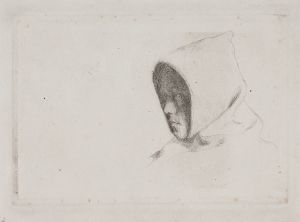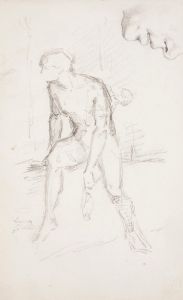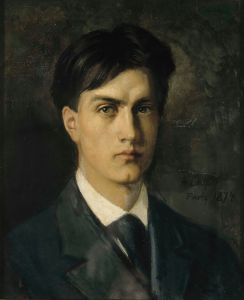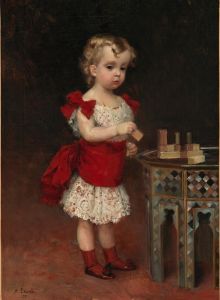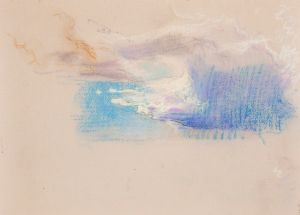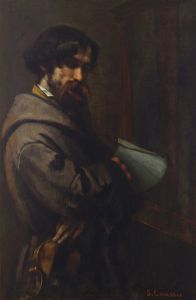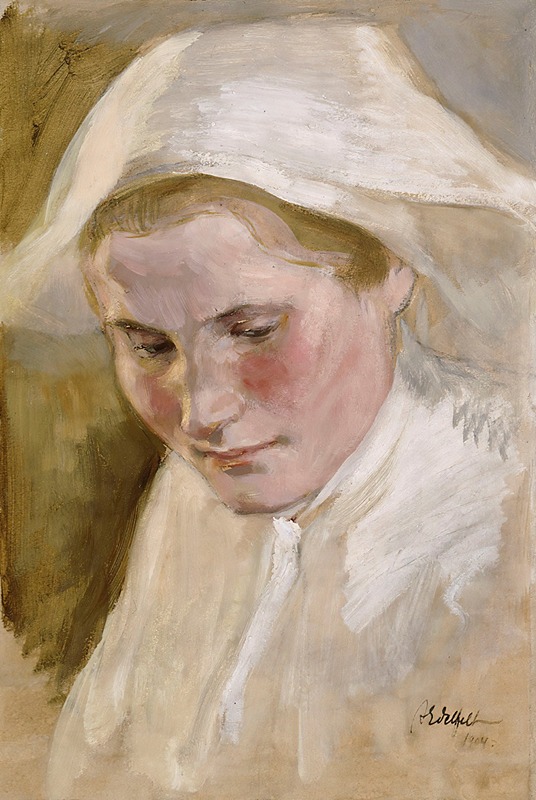
Woman’s Head
A hand-painted replica of Albert Edelfelt’s masterpiece Woman’s Head, meticulously crafted by professional artists to capture the true essence of the original. Each piece is created with museum-quality canvas and rare mineral pigments, carefully painted by experienced artists with delicate brushstrokes and rich, layered colors to perfectly recreate the texture of the original artwork. Unlike machine-printed reproductions, this hand-painted version brings the painting to life, infused with the artist’s emotions and skill in every stroke. Whether for personal collection or home decoration, it instantly elevates the artistic atmosphere of any space.
Albert Edelfelt was a prominent Finnish painter known for his realistic style and ability to capture the essence of his subjects. One of his works, "Woman’s Head," exemplifies his skill in portraiture and his attention to detail. Although there is limited specific information available about this particular painting, it can be appreciated within the broader context of Edelfelt's oeuvre and the artistic movements of his time.
Albert Edelfelt was born on July 21, 1854, in Porvoo, Finland, and he became one of the most celebrated artists in Finland during the late 19th and early 20th centuries. He studied art in Helsinki, Antwerp, and Paris, where he was influenced by the prevailing artistic trends, including realism and naturalism. Edelfelt's time in Paris exposed him to the works of renowned artists and allowed him to develop a style that combined Finnish themes with international techniques.
"Woman’s Head" is a testament to Edelfelt's ability to portray human emotion and character through his brushwork. While specific details about the painting's creation, such as the date and the identity of the model, are not well-documented, the work is consistent with Edelfelt's focus on capturing the subtleties of human expression. His portraits often feature a delicate interplay of light and shadow, which adds depth and dimension to the subject's face.
Edelfelt's portraits are known for their lifelike quality and the artist's keen observation of his subjects. He had a remarkable ability to convey the personality and mood of the individuals he painted, often using a muted color palette to emphasize the natural beauty of his subjects. In "Woman’s Head," Edelfelt likely employed these techniques to create a sense of intimacy and immediacy, drawing the viewer into the world of the subject.
Throughout his career, Edelfelt received numerous accolades and commissions, which helped to establish his reputation both in Finland and abroad. He was a pioneer in bringing Finnish art to an international audience, and his works were exhibited in prestigious venues across Europe. Edelfelt's influence extended beyond his own paintings, as he played a significant role in mentoring younger Finnish artists and promoting the development of a national art identity.
While "Woman’s Head" may not be as widely recognized as some of Edelfelt's other works, it remains an important piece within his body of work. It reflects his dedication to portraying the human experience with authenticity and sensitivity. Edelfelt's legacy continues to be celebrated in Finland, where he is regarded as a key figure in the country's artistic heritage.
In summary, "Woman’s Head" by Albert Edelfelt is a fine example of the artist's skill in portraiture and his ability to capture the essence of his subjects. Although specific details about the painting are scarce, it can be appreciated as part of Edelfelt's broader contribution to the art world and his role in shaping Finnish cultural identity.





